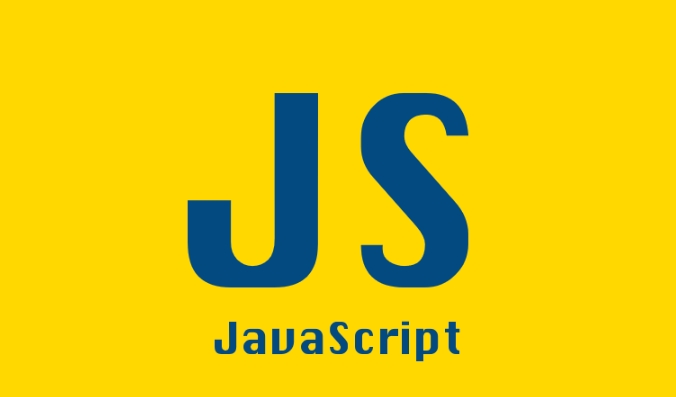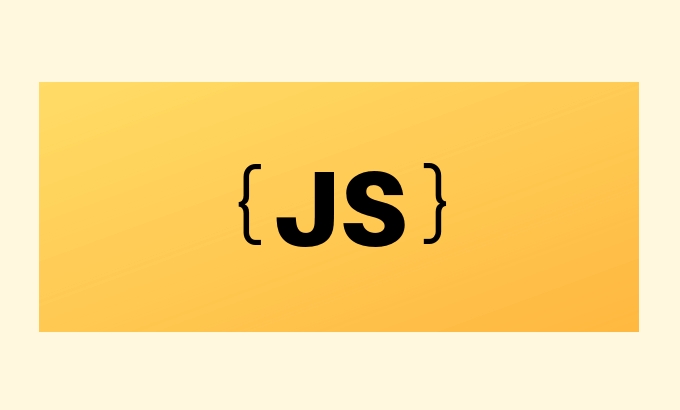The core of writing a Babel plug-in is to understand and operate AST. 1. First understand the structured representation of the code through AST Explorer and find the node type to be modified; 2. The basic structure of the plug-in is to return an object containing a visitor and define operations on a specific node; 3. Use the path.node or path method to modify node properties or replace nodes; 4. Debug plug-in effects in real time through project testing, Babel plugin-tester or AST Explorer; 5. Pay attention to avoiding side effects, use @babel/types to create nodes, handle Scope conflicts, generate unique variable names, and support plug-in configuration options. Once you master these steps, writing the Babel plugin will become clear and easy to understand.

Writing a Babel plug-in is actually not that mysterious, mainly to understand the structure and processing of AST (abstract syntax tree). If you have used Babel and know that it can convert code, you can try writing a plugin yourself to customize your JavaScript conversion logic.

Understanding AST is the first step
The core of the Babel plug-in is to operate AST. AST is a structured representation of the code, such as a function call, variable declaration, if statement, etc., which will be converted into a specific node object. You don't need to write AST yourself, but access, modify, and replace these nodes through the API provided by Babel.
To give the simplest example: you want to replace all console.log with a custom log function. Then all you have to do is find the node of type CallExpression , and then determine that its callee.object is console and callee.property is log , and then replace it with the expression you want.

You can use AST Explorer to view the AST structure corresponding to the code, which is very helpful for understanding how to write plugins.
Start with the simplest plugin structure
A Babel plugin is essentially a function that returns an object, which contains an accessor, which defines the type of node you want to operate on.

The basic structure is as follows:
module.exports = function () {
return {
Visitor: {
// Define the node type to be processed here},
};
}; Suppose you want to change all var declarations let , you can listen to VariableDeclaration node:
Visitor: {
VariableDeclaration(path) {
if (path.node.kind === 'var') {
path.node.kind = 'let';
}
}
} The key here is to get the current node through path.node and modify its properties. Remember, path provides more operation methods, such as replaceWith , remove , insertBefore , etc.
Plugin debugging and testing are important
After writing the plugin, you have to test whether it takes effect. There are several ways to:
- Install the plugin in the project, run Babel translation, and see if the output is as expected
- Writing unit tests using Babel's plugin-tester
- Load your plug-in directly in AST Explorer to see the effects in real time
Printing AST is a good habit when debugging. For example, add a sentence console.log(path.node) to the accessor to quickly view the node structure.
In addition, the order of plugins is also critical. The execution order of Babel plug-ins is in configuration order. If your plug-in depends on the conversion result of another plug-in, you may need to adjust the order.
Some tips in practical applications
- Avoid too much modification of AST : Try to modify only necessary nodes to avoid side effects
- Use @babel/types tool : For example, when creating a new node, it is safer to use
t.identifier('let')than to write objects manually - Note Scope problem : If you want to add variables or functions, to ensure that there is no naming conflict, you can use
path.scope.generateUidIdentifierto generate unique variable names - Support option configuration : Plugin can accept parameters, such as
function myPlugin({ types: t }, options), which is more flexible
Basically that's it. Writing a Babel plug-in may feel a bit abstract at first, but once you become familiar with the AST structure and accessor mode, you will find that it is actually quite straightforward.
The above is the detailed content of Building Custom JavaScript Babel Plugins. For more information, please follow other related articles on the PHP Chinese website!

Hot AI Tools

Undress AI Tool
Undress images for free

Undresser.AI Undress
AI-powered app for creating realistic nude photos

AI Clothes Remover
Online AI tool for removing clothes from photos.

Clothoff.io
AI clothes remover

Video Face Swap
Swap faces in any video effortlessly with our completely free AI face swap tool!

Hot Article

Hot Tools

Notepad++7.3.1
Easy-to-use and free code editor

SublimeText3 Chinese version
Chinese version, very easy to use

Zend Studio 13.0.1
Powerful PHP integrated development environment

Dreamweaver CS6
Visual web development tools

SublimeText3 Mac version
God-level code editing software (SublimeText3)

Hot Topics
 How to work with dates and times in js?
Jul 01, 2025 am 01:27 AM
How to work with dates and times in js?
Jul 01, 2025 am 01:27 AM
The following points should be noted when processing dates and time in JavaScript: 1. There are many ways to create Date objects. It is recommended to use ISO format strings to ensure compatibility; 2. Get and set time information can be obtained and set methods, and note that the month starts from 0; 3. Manually formatting dates requires strings, and third-party libraries can also be used; 4. It is recommended to use libraries that support time zones, such as Luxon. Mastering these key points can effectively avoid common mistakes.
 Why should you place tags at the bottom of the ?
Jul 02, 2025 am 01:22 AM
Why should you place tags at the bottom of the ?
Jul 02, 2025 am 01:22 AM
PlacingtagsatthebottomofablogpostorwebpageservespracticalpurposesforSEO,userexperience,anddesign.1.IthelpswithSEObyallowingsearchenginestoaccesskeyword-relevanttagswithoutclutteringthemaincontent.2.Itimprovesuserexperiencebykeepingthefocusonthearticl
 What is event bubbling and capturing in the DOM?
Jul 02, 2025 am 01:19 AM
What is event bubbling and capturing in the DOM?
Jul 02, 2025 am 01:19 AM
Event capture and bubble are two stages of event propagation in DOM. Capture is from the top layer to the target element, and bubble is from the target element to the top layer. 1. Event capture is implemented by setting the useCapture parameter of addEventListener to true; 2. Event bubble is the default behavior, useCapture is set to false or omitted; 3. Event propagation can be used to prevent event propagation; 4. Event bubbling supports event delegation to improve dynamic content processing efficiency; 5. Capture can be used to intercept events in advance, such as logging or error processing. Understanding these two phases helps to accurately control the timing and how JavaScript responds to user operations.
 How can you reduce the payload size of a JavaScript application?
Jun 26, 2025 am 12:54 AM
How can you reduce the payload size of a JavaScript application?
Jun 26, 2025 am 12:54 AM
If JavaScript applications load slowly and have poor performance, the problem is that the payload is too large. Solutions include: 1. Use code splitting (CodeSplitting), split the large bundle into multiple small files through React.lazy() or build tools, and load it as needed to reduce the first download; 2. Remove unused code (TreeShaking), use the ES6 module mechanism to clear "dead code" to ensure that the introduced libraries support this feature; 3. Compress and merge resource files, enable Gzip/Brotli and Terser to compress JS, reasonably merge files and optimize static resources; 4. Replace heavy-duty dependencies and choose lightweight libraries such as day.js and fetch
 A definitive JS roundup on JavaScript modules: ES Modules vs CommonJS
Jul 02, 2025 am 01:28 AM
A definitive JS roundup on JavaScript modules: ES Modules vs CommonJS
Jul 02, 2025 am 01:28 AM
The main difference between ES module and CommonJS is the loading method and usage scenario. 1.CommonJS is synchronously loaded, suitable for Node.js server-side environment; 2.ES module is asynchronously loaded, suitable for network environments such as browsers; 3. Syntax, ES module uses import/export and must be located in the top-level scope, while CommonJS uses require/module.exports, which can be called dynamically at runtime; 4.CommonJS is widely used in old versions of Node.js and libraries that rely on it such as Express, while ES modules are suitable for modern front-end frameworks and Node.jsv14; 5. Although it can be mixed, it can easily cause problems.
 How to make an HTTP request in Node.js?
Jul 13, 2025 am 02:18 AM
How to make an HTTP request in Node.js?
Jul 13, 2025 am 02:18 AM
There are three common ways to initiate HTTP requests in Node.js: use built-in modules, axios, and node-fetch. 1. Use the built-in http/https module without dependencies, which is suitable for basic scenarios, but requires manual processing of data stitching and error monitoring, such as using https.get() to obtain data or send POST requests through .write(); 2.axios is a third-party library based on Promise. It has concise syntax and powerful functions, supports async/await, automatic JSON conversion, interceptor, etc. It is recommended to simplify asynchronous request operations; 3.node-fetch provides a style similar to browser fetch, based on Promise and simple syntax
 What are best practices for writing clean and maintainable JavaScript code?
Jun 23, 2025 am 12:35 AM
What are best practices for writing clean and maintainable JavaScript code?
Jun 23, 2025 am 12:35 AM
To write clean and maintainable JavaScript code, the following four points should be followed: 1. Use clear and consistent naming specifications, variable names are used with nouns such as count, function names are started with verbs such as fetchData(), and class names are used with PascalCase such as UserProfile; 2. Avoid excessively long functions and side effects, each function only does one thing, such as splitting update user information into formatUser, saveUser and renderUser; 3. Use modularity and componentization reasonably, such as splitting the page into UserProfile, UserStats and other widgets in React; 4. Write comments and documents until the time, focusing on explaining the key logic and algorithm selection
 var vs let vs const: a quick JS roundup explainer
Jul 02, 2025 am 01:18 AM
var vs let vs const: a quick JS roundup explainer
Jul 02, 2025 am 01:18 AM
The difference between var, let and const is scope, promotion and repeated declarations. 1.var is the function scope, with variable promotion, allowing repeated declarations; 2.let is the block-level scope, with temporary dead zones, and repeated declarations are not allowed; 3.const is also the block-level scope, and must be assigned immediately, and cannot be reassigned, but the internal value of the reference type can be modified. Use const first, use let when changing variables, and avoid using var.






